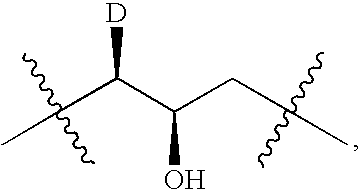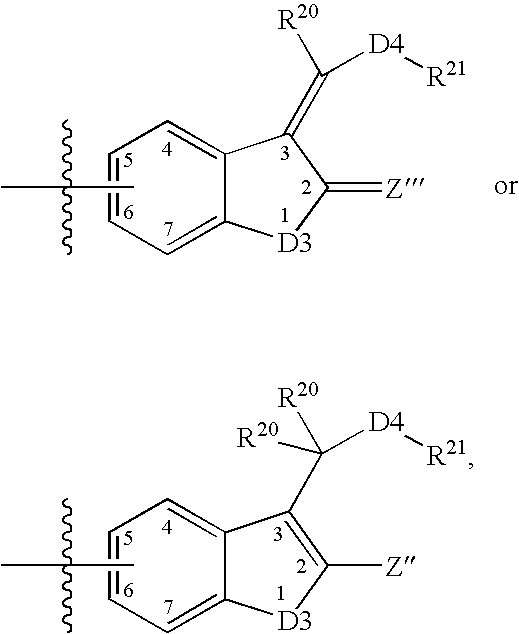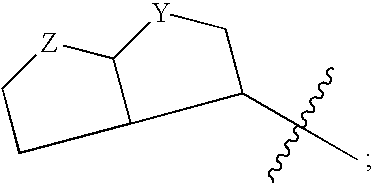HIV infection also results in neurological deterioration and, ultimately, in the death of the infected individual.
Typically, the usefulness of currently available HIV PIs in the treatment of AIDS has been limited by relatively short
plasma half-life, poor oral
bioavailability, and the technical difficulty of scale-up synthesis (Meek et al.
Although these inhibitors are effective in preventing the retroviral PR from functioning, the inhibitors suffer from some distinct disadvantages.
Generally, peptidomimetics make poor drugs due to their potential adverse pharmacological properties, i.e., poor oral absorption, poor stability and rapid
metabolism (Plattner et al.,
Drug Discovery Technologies, Clark et al., eds., Ellish Horwood, Chichester, England (1990)).
Furthermore, since the
active site of the PR is hindered, i.e., has reduced
accessibility as compared to the remainder of the PR, the ability of the inhibitors to access and bind in the
active site of the PR is impaired.
Those inhibitors that do bind are generally poorly water-soluble, causing distinct problems for formulation and
drug delivery.
The ability of HAART to provide effective long-term
antiretroviral therapy for HIV-1 infection has become a complex issue since 40 to 50% of those who initially achieve favorable viral suppression to undetectable levels experience
treatment failure (Grabar et al., AIDS, 14, 141-149 (1999); Wit et al., J. Infect. Dis., 179, 790-798 (1999)).
In addition, it is evident that with these anti-HIV drugs only partial immunologic reconstitution is attained in patients with advanced HIV-1 infection.
Accordingly,
drug resistant HIV strains represent distinct infectious entities from a therapeutic viewpoint, and
pose new challenges for
drug design as well as
drug treatment of existing infections.
Because of this, drugs that can be rendered ineffective with a
single mutation from
wild type have the shortest effective lifetime in monotherapy settings.
The apparently large number of possible mutational pathways, possible mutational combinations, and the danger of generating class-specific
cross resistance can make the choice of a subsequent protease inhibitor-containing combination
regimen for “salvage therapy” seem very complicated and risky.
Even the choice of protease inhibitor with which to initiate therapy, so-called “first-line” therapy, can be a risky enterprise that may inadvertently select for an undesired resistance pathway.
Drug-naïve HIV-infected individuals
pose even more of a risk for developing resistance to first-line therapies.
For the reasons outlined above, the development of new anti-HIV-1 therapeutics presents formidable challenges different from those in the design of the first line drugs, particularly in regard to consideration of selection pressure mechanisms in addition to the conventional issues of
potency,
pharmacology, safety, and mechanism of
drug action.
In particular, the very features that contribute to the specificity and
efficacy of RTIs and PIs provide the
virus with a strategy to
mount resistance (Erickson and Burt, Annu. Rev. Pharmacol. Toxicol., 36, 545-571 (1996); Mitsuya and Erickson, Textbook of AIDS
Medicine, pp.751-780, Williams and Wilkins, Baltimore (1999)), and it seems highly likely that this resistance issue will remain problematic for years to come.
Despite numerous studies of
drug resistance to PIs, successful strategies to design inhibitors directly targeted against drug resistant HIV have been lacking.
The latter approach, exemplified by KALETRA (a
lopinavir /
ritonavir combination), involves higher total drug exposures to PIs which, over time, may lead to long term, serious side effects.
Tragically for these patients, the available options for AIDS
chemotherapy and / or HIV management is severely limited or is, otherwise, completely nonexistent.
 Login to View More
Login to View More 


